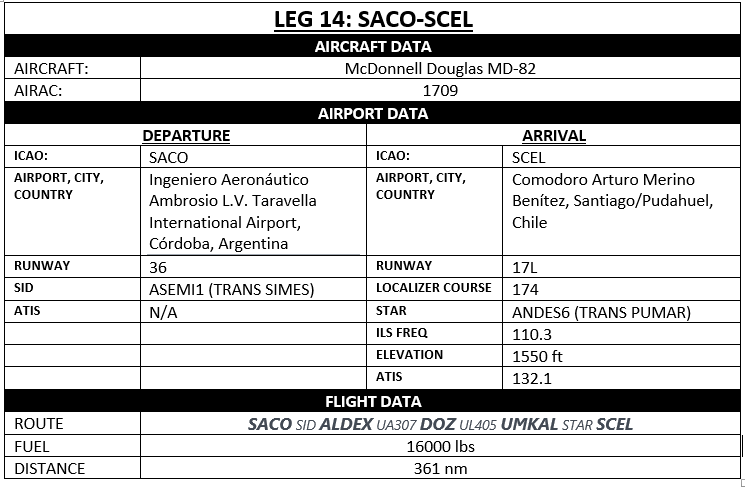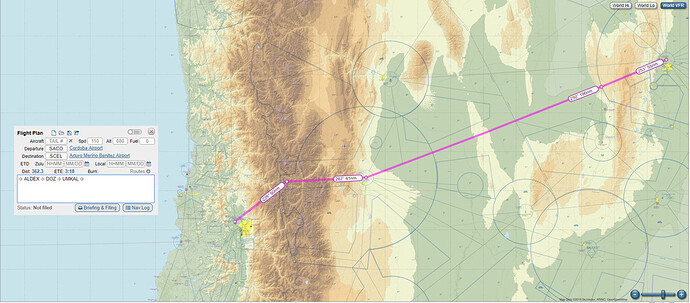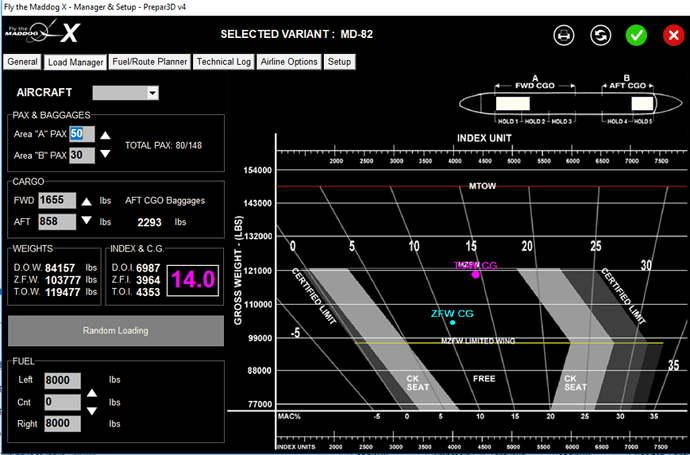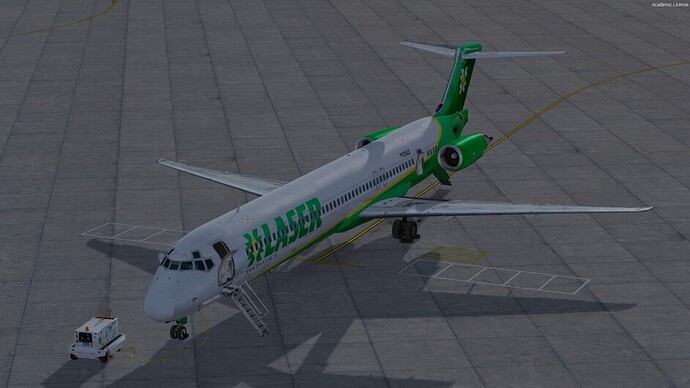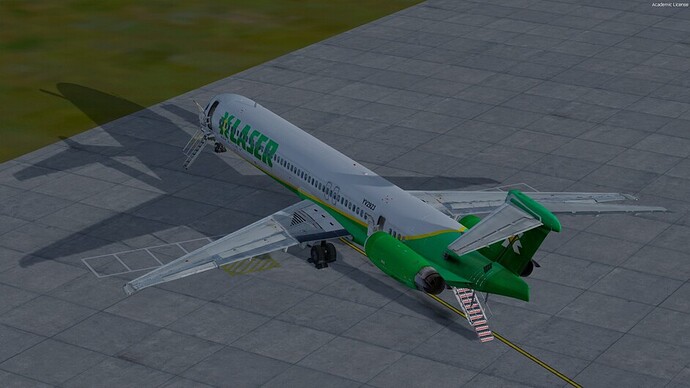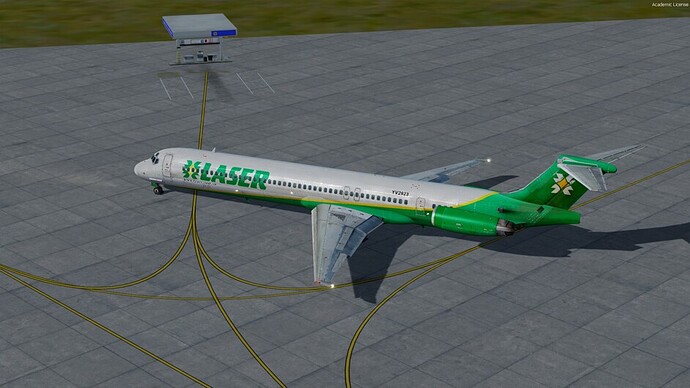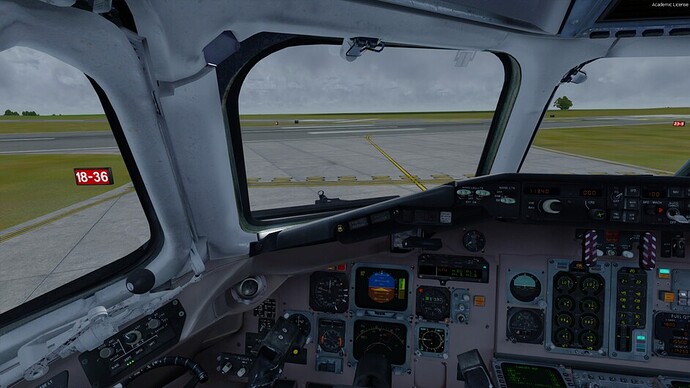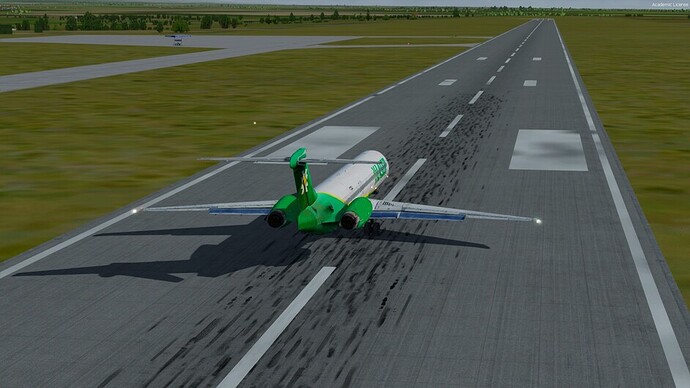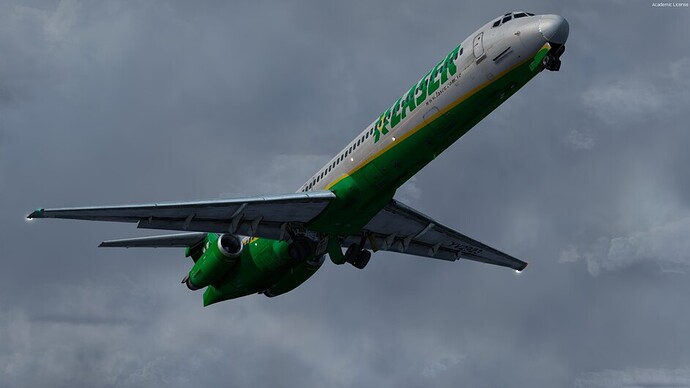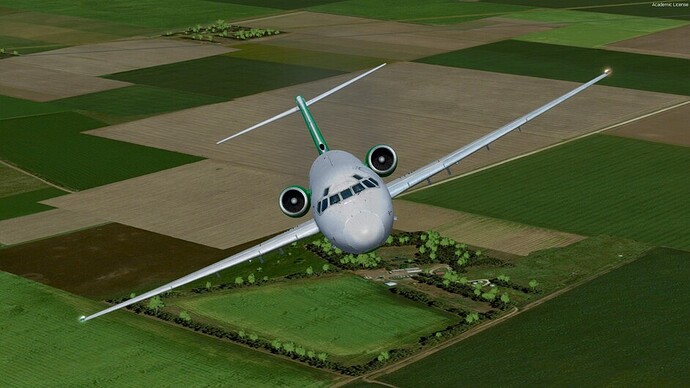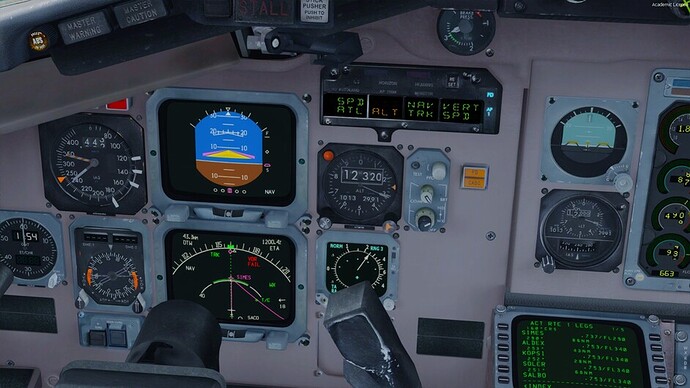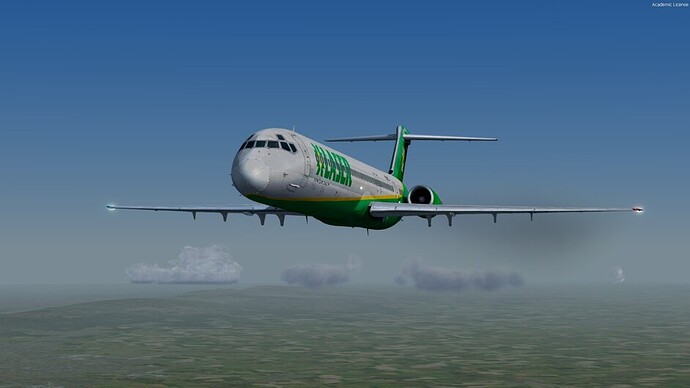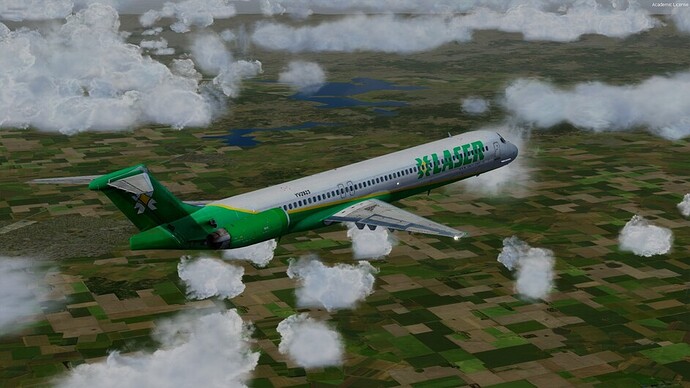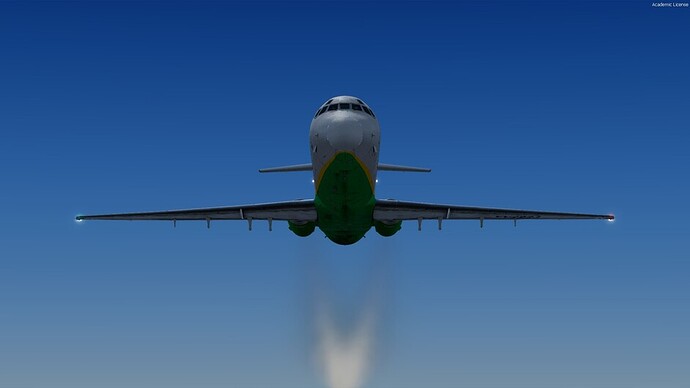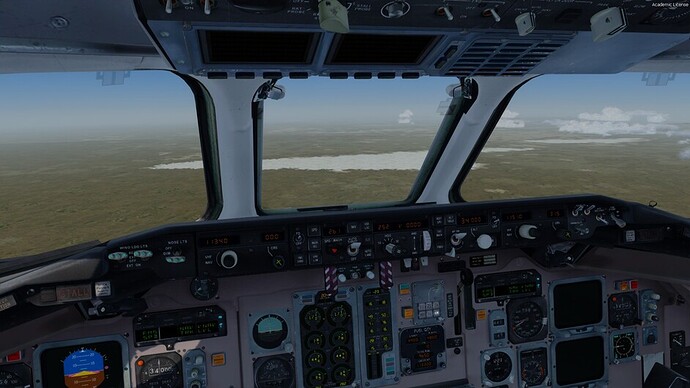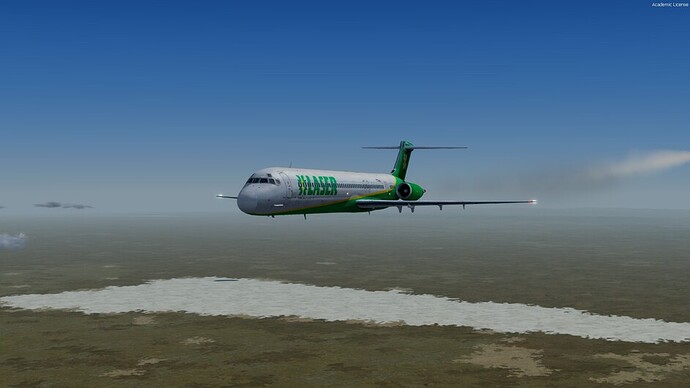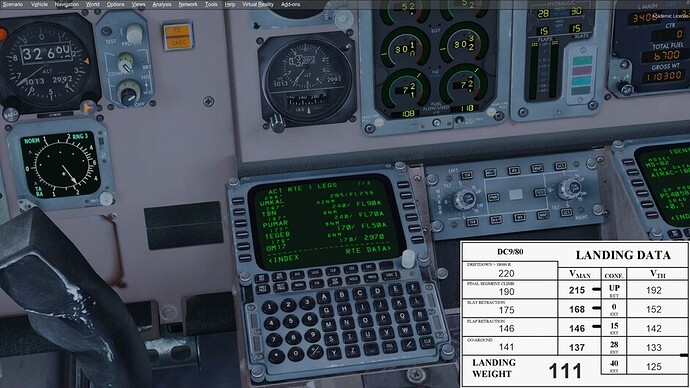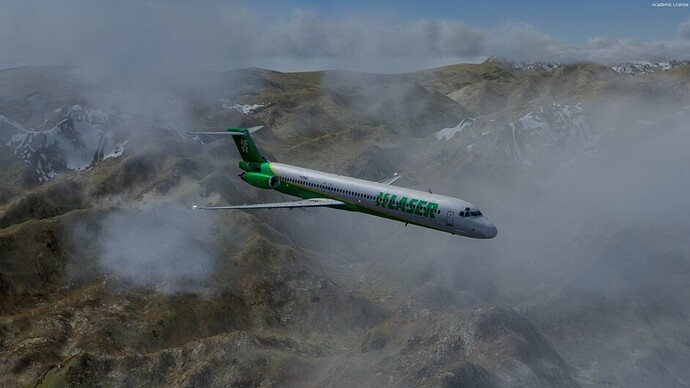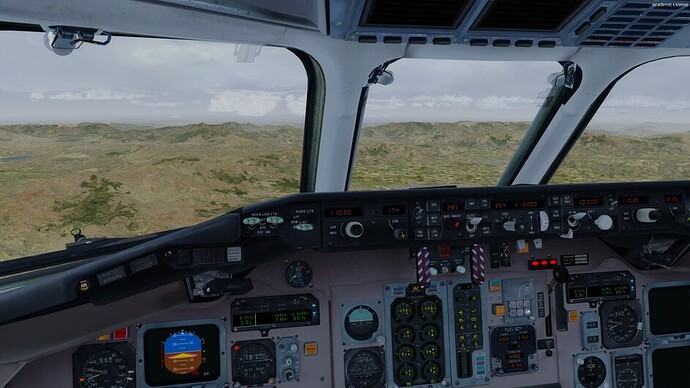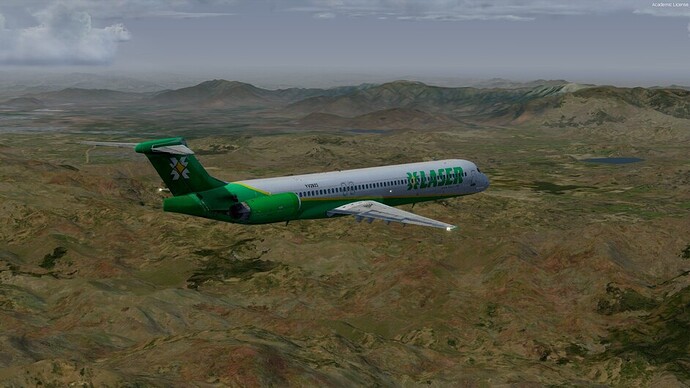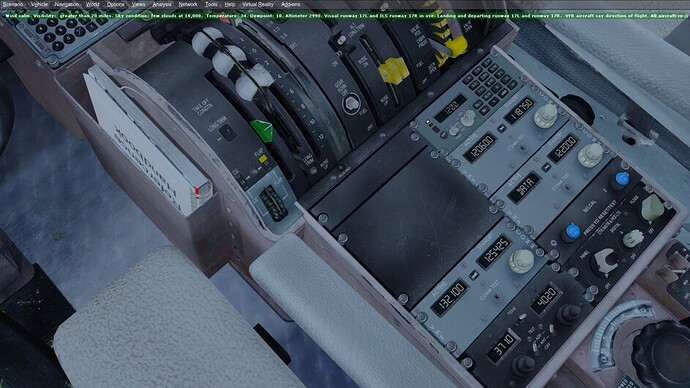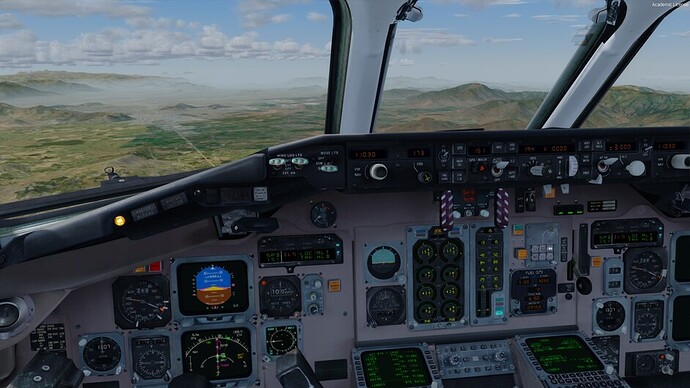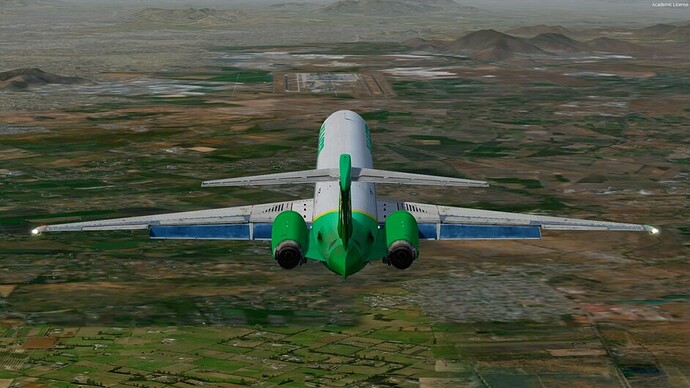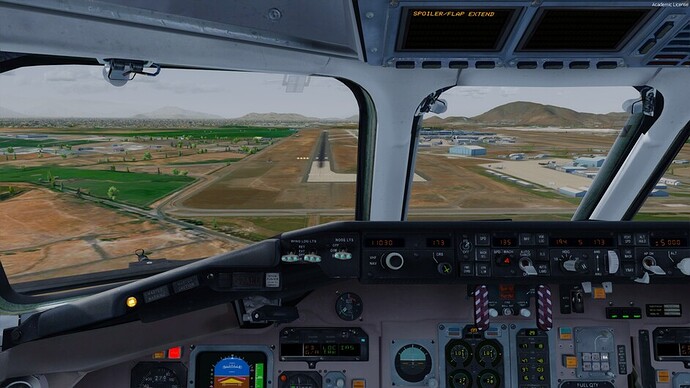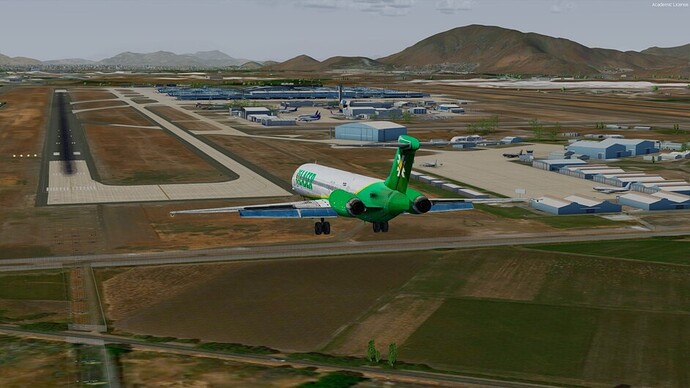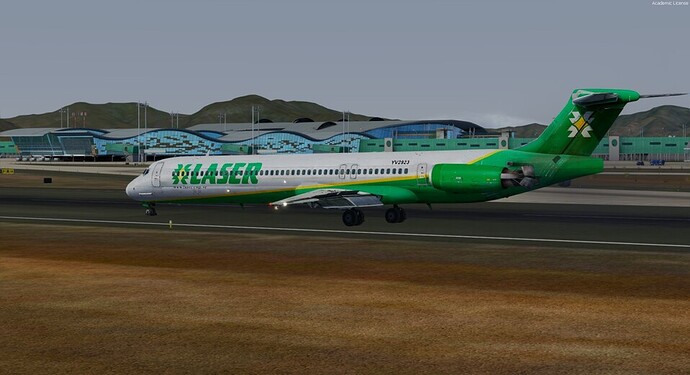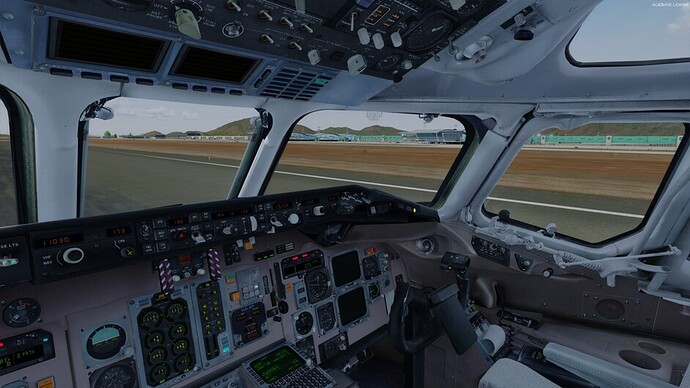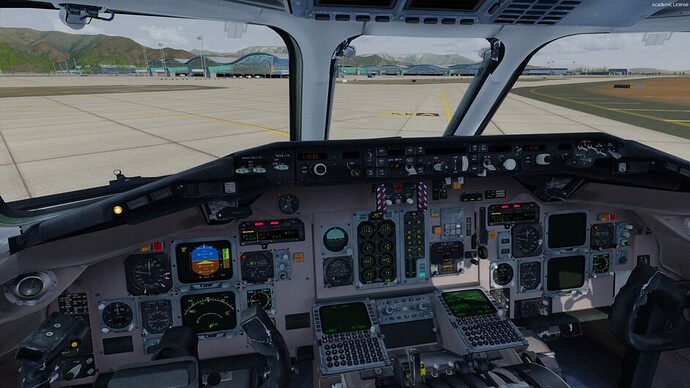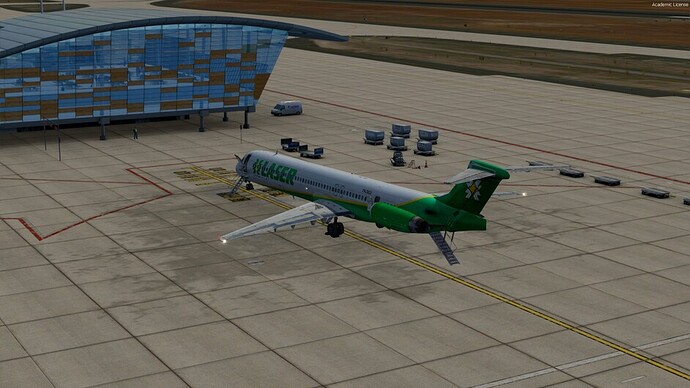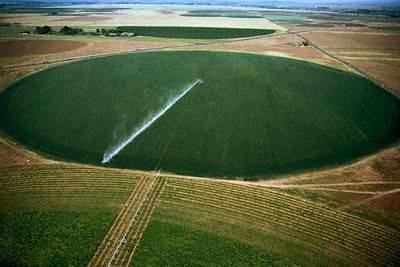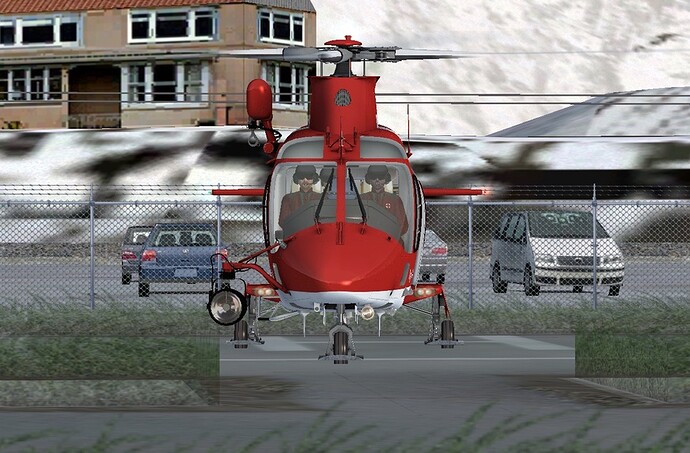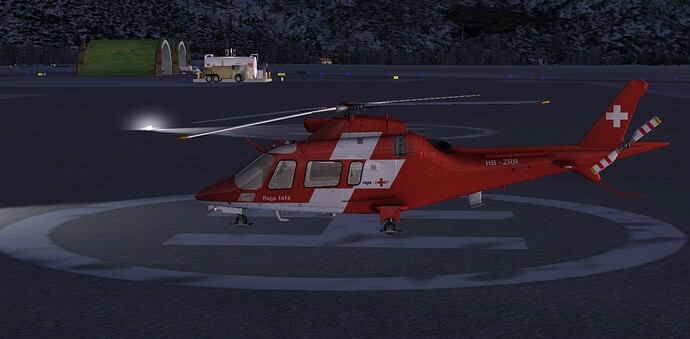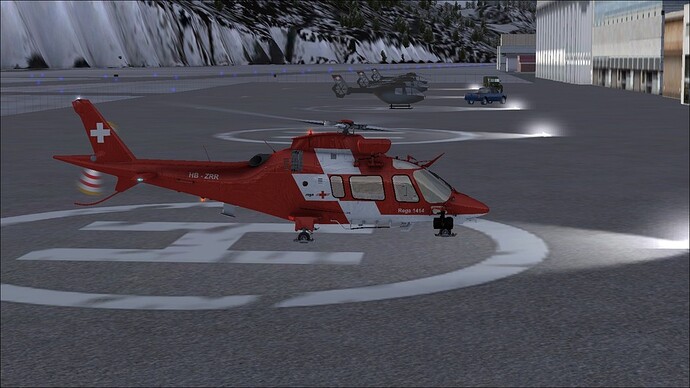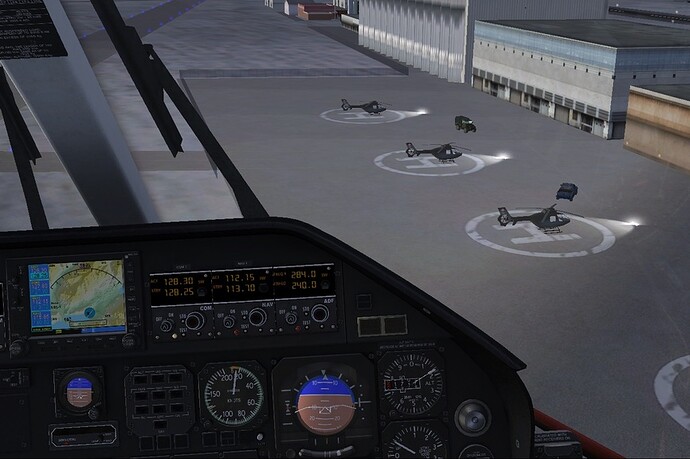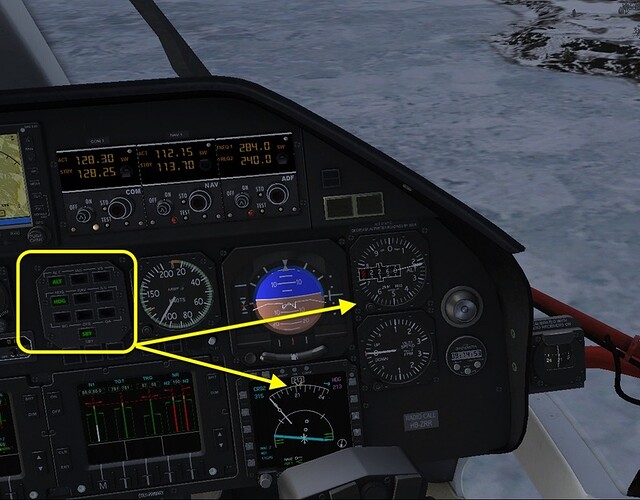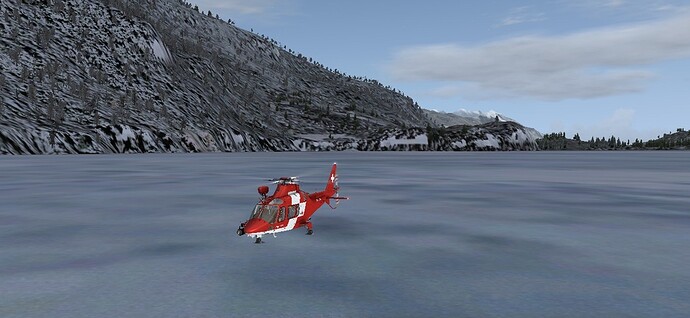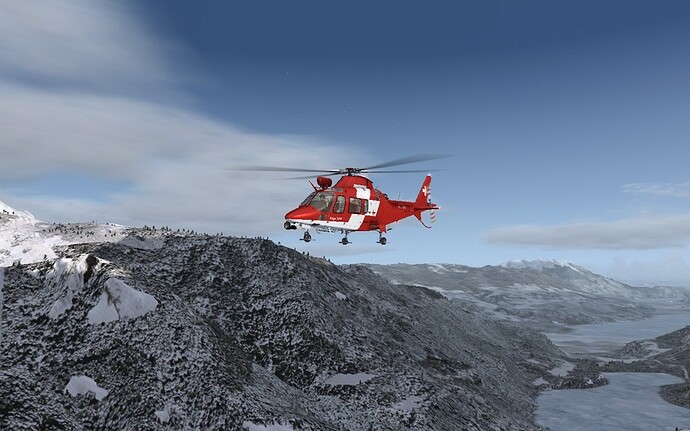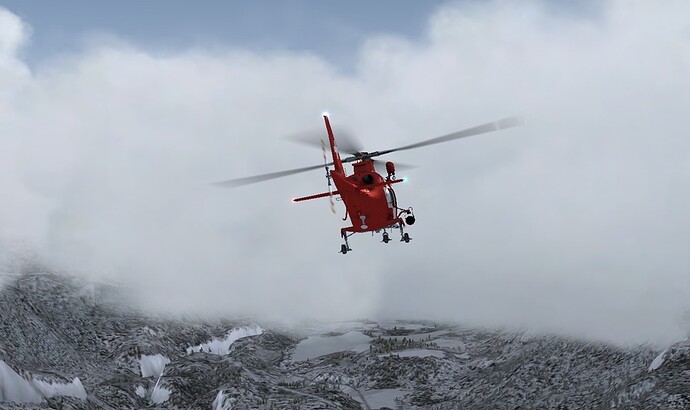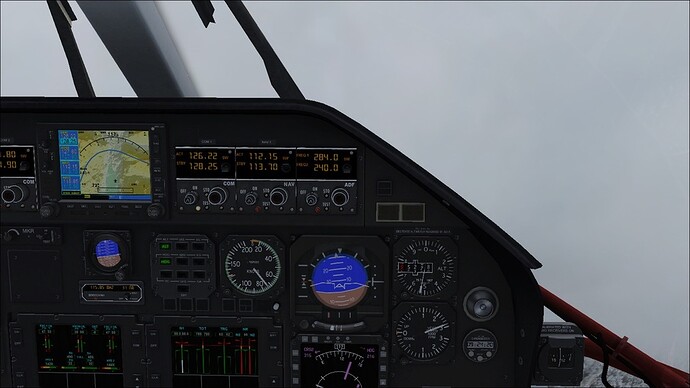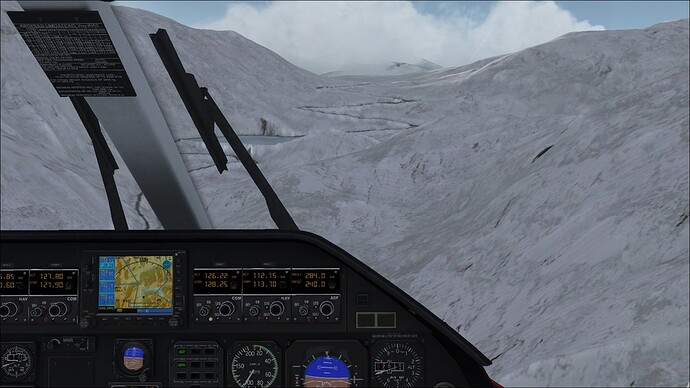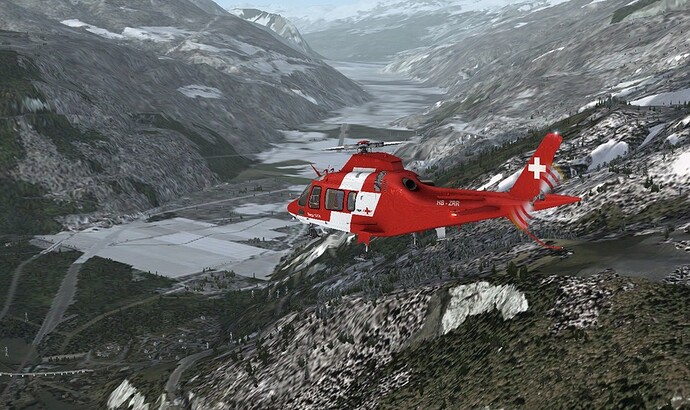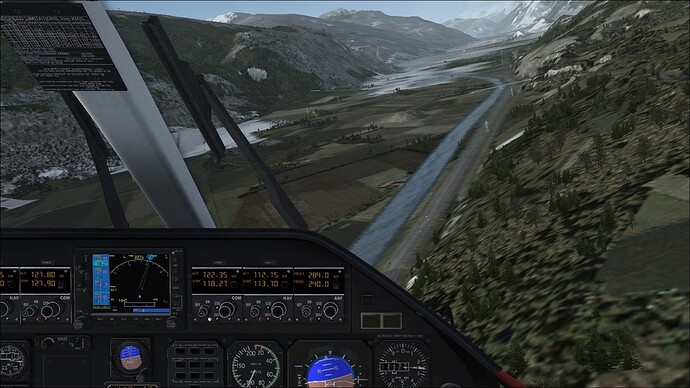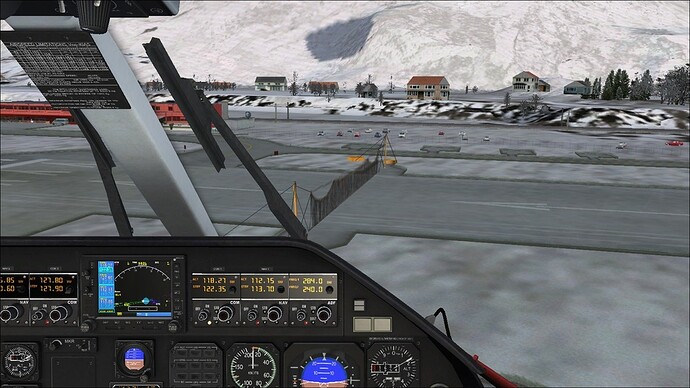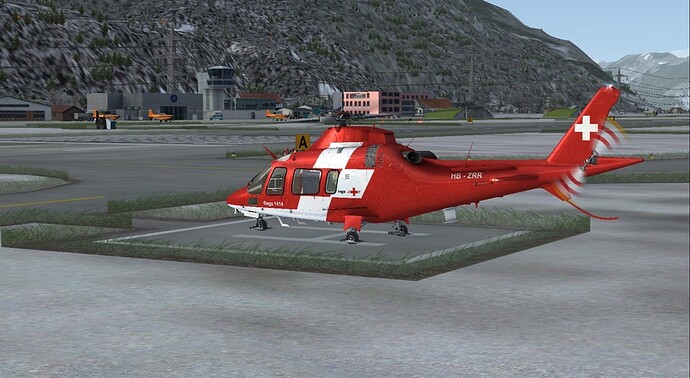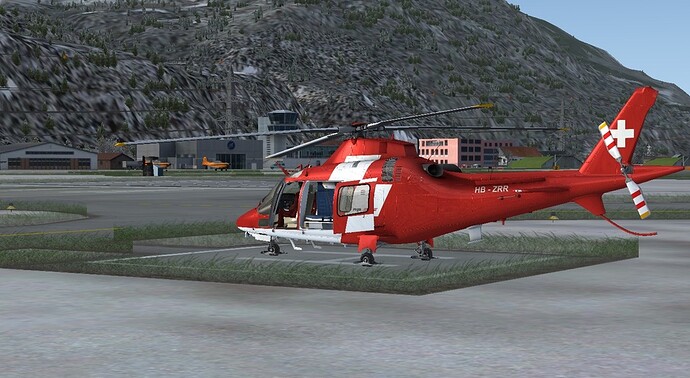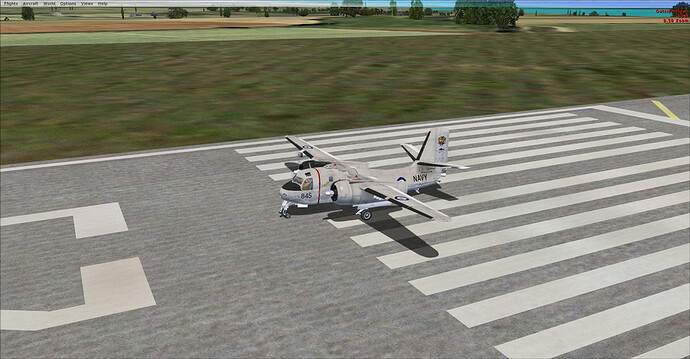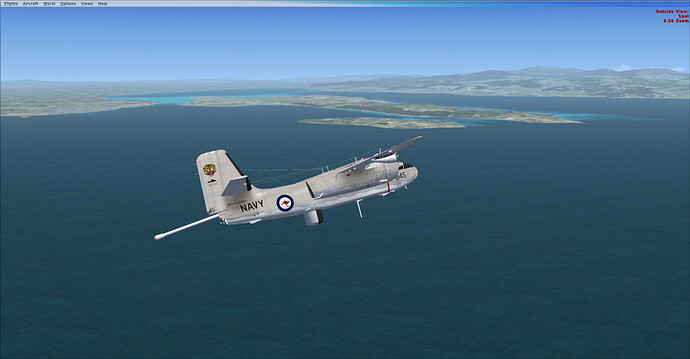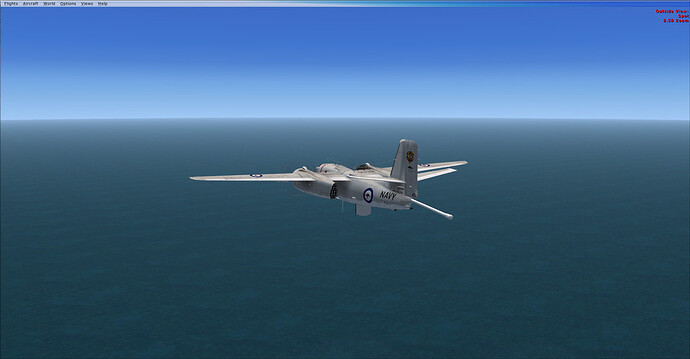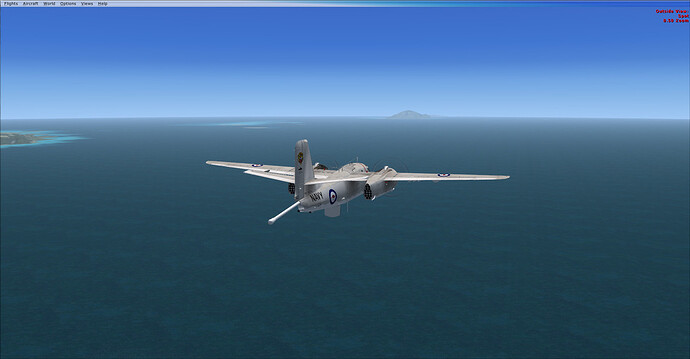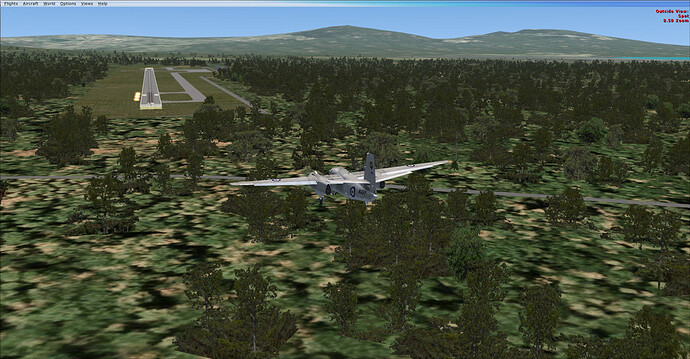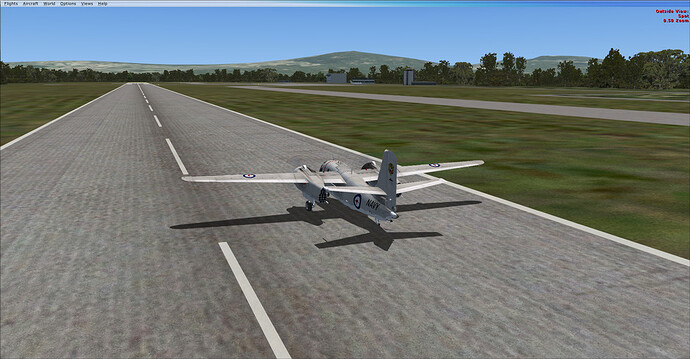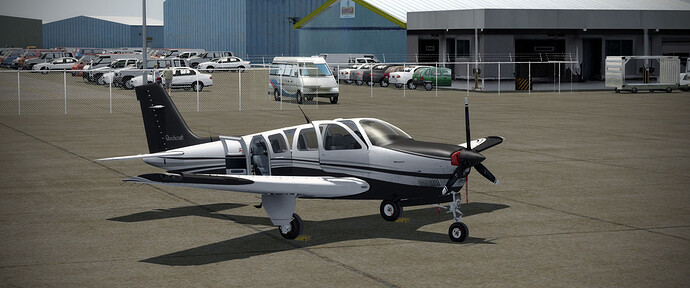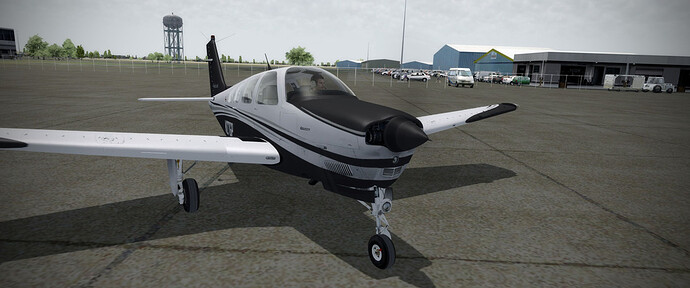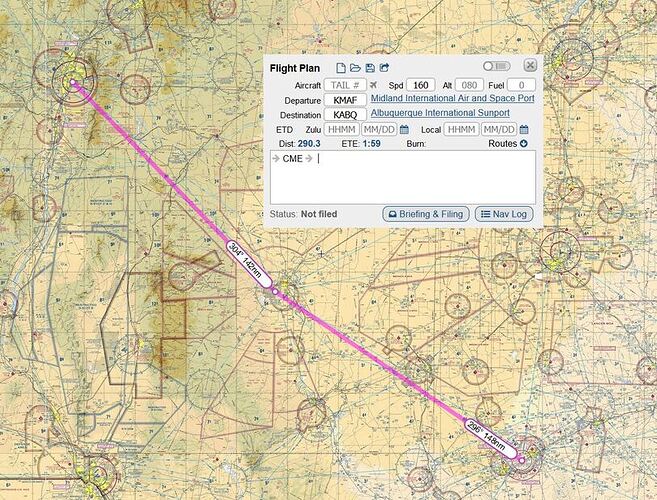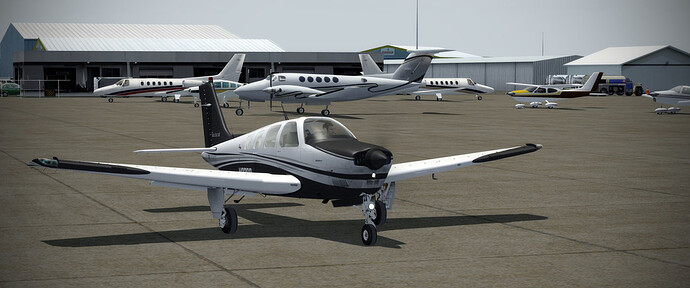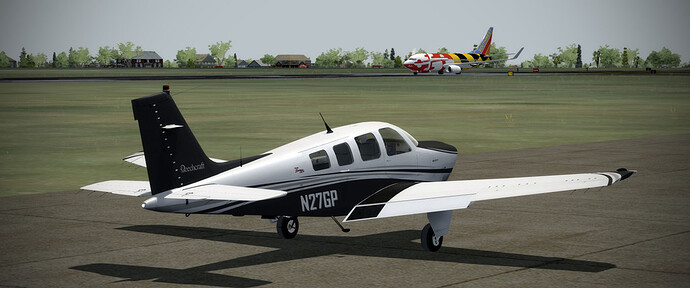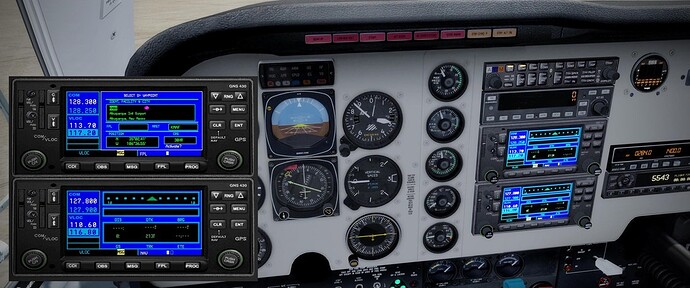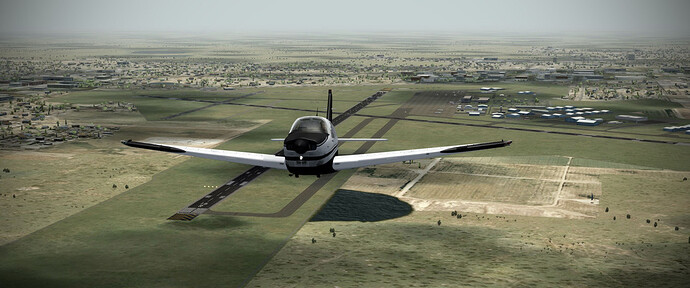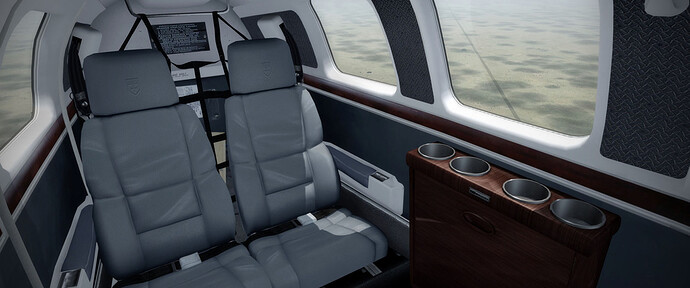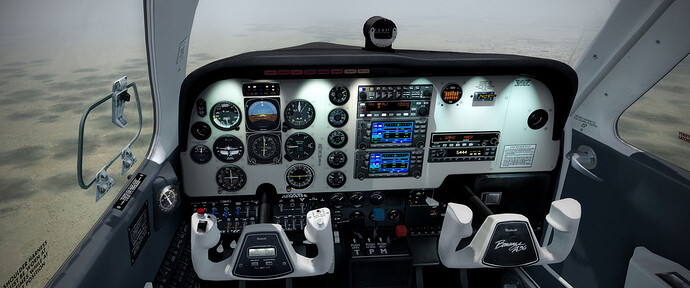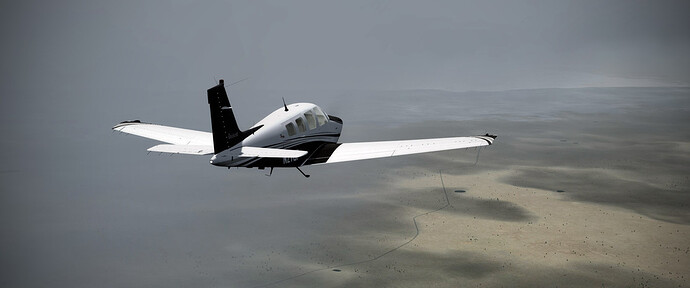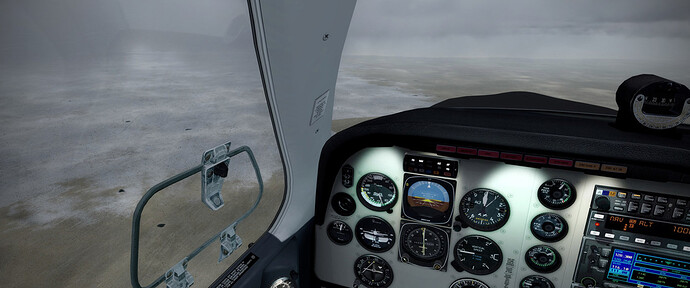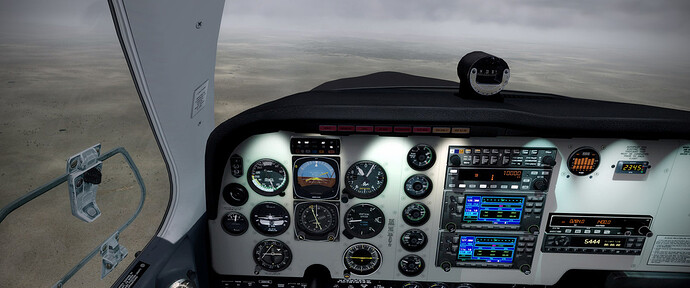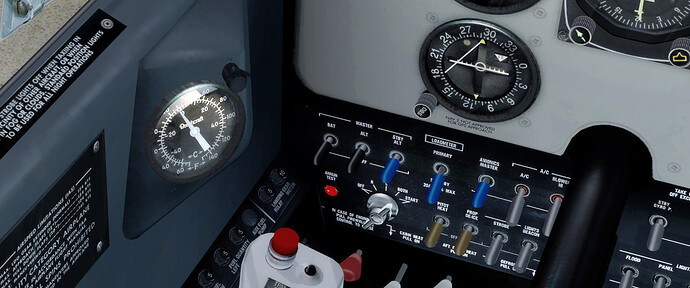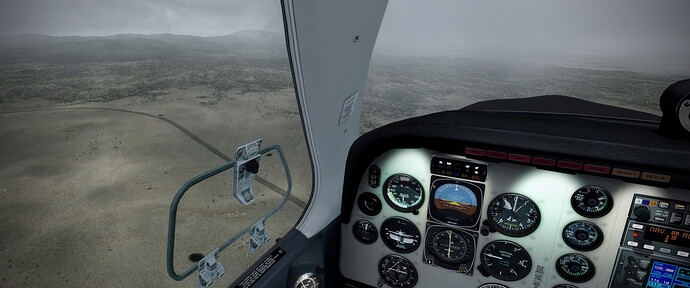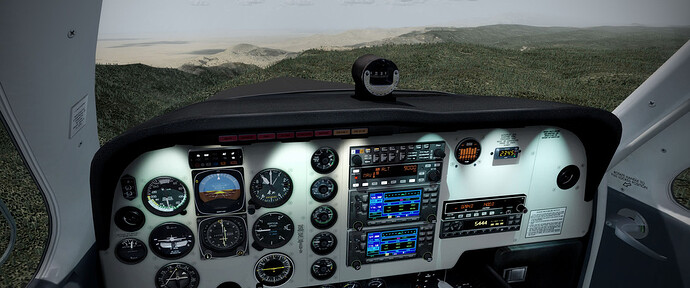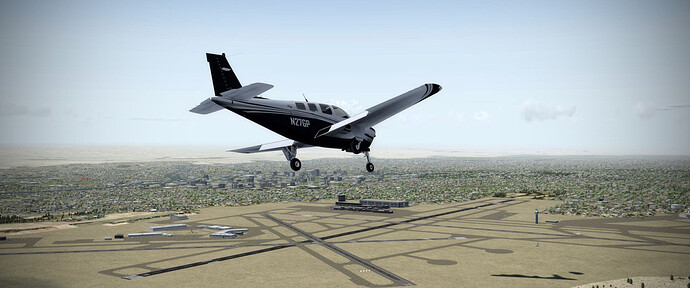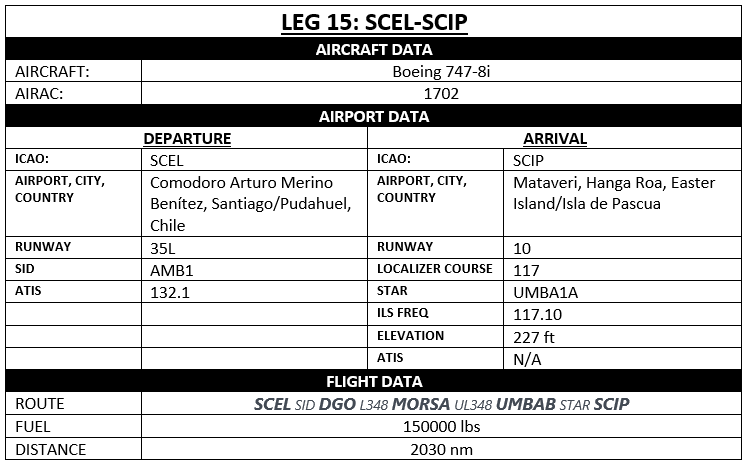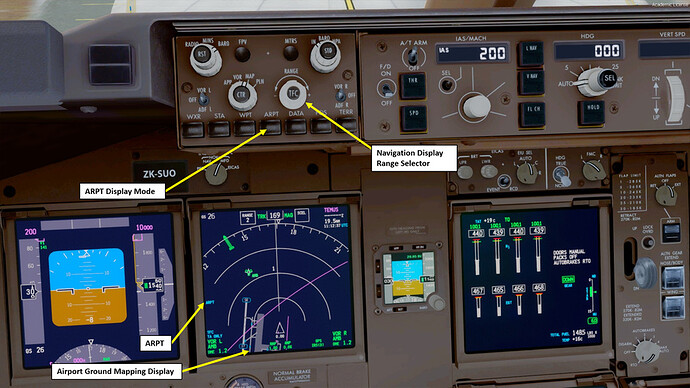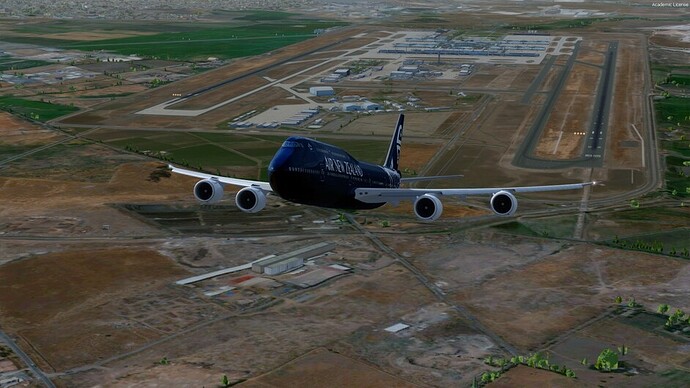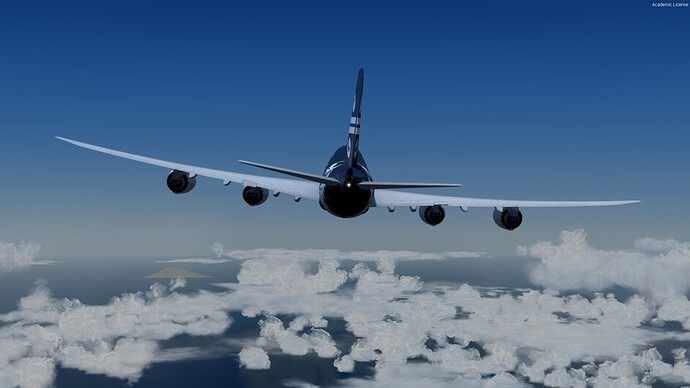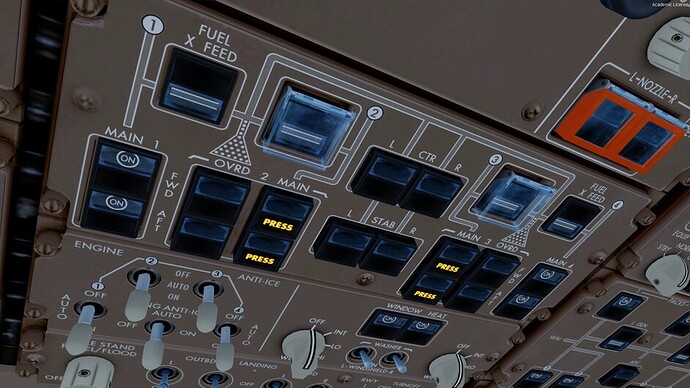Click to reveal AAR
Time for some old school Slant Alpha navigation in the newly released Just Flight Avro Vulcan.
We’ll be navigating from VOR to VOR all the way to Cordoba.

I had the chance to visit two Vulcans (in Duxford IWM and Cosford RAF museums) and it is hard to describe how huge these aircraft are when you stand right next to it.
XJ824 in Duxford
XM598 in Cosford
Interestingly, the Bristol-Siddeley Olympus 301 turbojet engines fitted on the Vulcan were also used on the TSR 2, another magnificent british jet that got its program cancelled. These engines are also very similar to the ones installed on the Concorde (Olympus 593), which I also had the chance to visit in Duxford (terrific exhibit!).
Now, now, enough with the pretty pictures. Time to go to work and see Bossman.
- BOSSMAN: Here you are again, Mister Chuck. What brings you here? Haven’t had enough fun with the Hawkeye already?
- ME: It’s an okay plane, but, you see, Just Flight just released this new plane and…
- BOSSMAN: And you want your wife to eat some more Kraft Dinner for the rest of the month, is that it?
- ME: Exactly. I want to fly this magnificent Vulcan to Cordoba.
- BOSSMAN: Cordoba… as in that place in Argentina?
- ME: Precisely.
- BOSSMAN: Argentina… as in that place where the Vulcan went to war some years ago?
- ME: You don’t sound too thrilled…
- BOSSMAN: As much as I hate your guts, young man, the MAD company cannot afford to get a british bomber shot down over Argentina.
- ME: But…
- BOSSMAN: And the noise requirements prevent this aircraft from being operated even in the UK!
- ME: But the Queen said I could…
- BOSSMAN: You mean Randy Queen from Leicester? That doesn’t count!
- ME: Don’t you want to hear that Vulcan howl one more time?
After hours of arguing with Bossman, I am finally allowed to take my Vulcan to the skies. Wonderful!
I climb the ladder just next to the landing gear (LSHIFT+E)
On top of the ladder
The access to the cockpit is a bit tight
Thankfully, a quality-of-life improvement allows the fuel control panel to be rotated up with a white T handle
Fuel panel down
Fuel panel up
And there it is! The interior of a nuclear bomber.
I check that the parking brake is set.
Then, the maintenance crew plug in the Houchin Ground Power Unit (under the left wing) and the Palouste Air Pressure Compressor Cart (under the right wing).
A five-man crew, the first pilot, co-pilot, navigator radar, navigator plotter and air electronics officer (AEO) was accommodated within the pressure cabin on two levels; the pilots sitting on Martin-Baker 3KS ejection seats whilst on the lower level, the other crew sat facing rearwards and would abandon the aircraft via the entrance door.
Unfortunately, we can’t access the electrical panels in the back compartment since it’s not modelled (hidden behind this big metal door).
However, we can pop up 2-D panels for the ACP (Alternator Control Panel) and AAPP/SSP (Airborne Auxiliary Power Plant/ Secondary Supplies Panel). The AAPP is basically the APU (Auxiliary Power Unit) of the Vulcan.
First, we need to set the battery switch ON (SSP panel). We can confirm that the busbar gauge is at approx. 28 Volts.
Then, we set all four LP (Low-Pressure Fuel Cocks to OPEN (FWD).and close the cover guards.
On the right side console, set Cabin Pressure Selector to Cruise (Fully forward) and cover guard set to prevent inadvertent selections. Also set Engine Air and Cabin Air switches to OFF.
- Close the entry door (LSHIFT+E).
- Move to the fuel control panel and set all fuel pump switches ON (1 through 7).
- Set the Cross-Feed fuel cocks CLOSED.
- Set the Fuel Pump Auto/Manual switches to AUTO.
Interestingly, the pumps in AUTO mode will already start transferring fuel from different tanks to have a correct CG (Center of Gravity) for takeoff.
- We can verify fuel readings by holding the Fuel Tank Contents pushbuttons.
- Set Throttle/HP (High Pressure) Cocks Levers to OPEN/IDLING position (right click)
On the starter panel (left side of pilot seat), we can start the engines either using an engine-cross-start procedure or by using the “Rapid Start” procedure. This time, I try to go for the Rapid Start.
Good start! Confirmation of four successful engine starts is shown by the four engine start lights extinguishing. Once this occurs, switch OFF the ignition and engine master (MSW) switches.
We can also check the fuel flow and see if it’s within an acceptable range.
On the SSP and ACP panels, set the Port and Starboard TRU (Transformer Rectifier Unit) switches ON, the Port and Starboard Main Transformer switches ON, and the four Alternator switches ON.
On the left pilot console, set the PFCs switches, auto-stabiliser (Pitch & Yaw Dampers) and artificial feel switches ON. Basically, we can click on all the PFC Stop Buttons and turn off Artificial Feel & Pitch/Yaw dampers, then turn them all back on gradually using their respective switches.
Setting my navigation frequency to 114.9 (Antofagasta VOR), which is about 1.4 miles from us. The Vulcan doesn’t really use VORs for navigation according to the manual. It comes equipped with a TACAN system, which is used by the military and not modelled in Prepar3d. However, we can tune two knobs on the COM/NAV radio panel to VOR frequencies and use them like TACAN beacons (the frequency will only be visible via cockpit tooltips). You just need to make sure that the Radio Preset Frequency Selector is set to M (Manual).`
A couple of last checks before takeoff:
- Oxygen ON (for both pilot and copilot sides)
- Pressure Head Heaters (Pitot Heat) ON (DOWN & GUARDED)
- Radio Altimeter ON
- Engine Air switches for Engine 1 & 2 - ON/OPEN
- Port Cabin Air Switch - ON/OPEN
- Extend left & right taxi lights (FULL DOWN)
- Navigation Lights switch - STEADY
- Set External Light switch - ON
- Parking Brake OFF
Time to taxi
Heading towards runway 19. It’s a pretty foggy morning.
Needless to say, the Vulcan is absolutely HUGE.
Holding the CG CHECK button to see if the fuel pumps distributed the fuel correctly, giving me a balanced Center of Gravity. The CG should be good (and it is) since the fuel pumps were set to AUTO mode. When lined up on the runway, I also check that the correct heading is entered on the Beam Compass (194 for the first leg).
Removing ejection seat safety locking pins
Checking the rotation speed chart in function of AUW (All-Up Weight, also known as Gross Weight). Since we will takeoff with approx. 52,000 lbs of fuel, the empty weight is about 100,750 lbs and we’re carrying about 1000 lbs worth of payload, we have an AUW of 153,750 lbs. That gives us a rotation speed of about 137 kts and an initial climb speed of 150 kts. To be conservative, I’ll take a rotation speed of 140 kts and an initial climb speed of 150 kts. After that, the recommended climb speed is 250 kts all the way up to 20,000 ft, then Mach 0.86 above 20,000 ft.
I throttle up, wait for my engines to spool up and the Olympus engines howl the loudest and most magnificent sound I’ve ever heard.
Here is how it sounds like. This video was taken in a short check ride I did earlier to see how the plane behaved.
Just Flight Avro Vulcan Howl - YouTube
Retracting landing gear
Gear up and locked
The aircraft is surprisingly elegant for its size.
Skyrocketing over Antofagasta
As I reach 3,000 ft, I retract my landing lights, set my remaining Engine Air and Cabin Air switches ON/OPEN. I climb at 250 kts.
Looking at the aircraft limitations… I really need to make sure I am super careful with this aircraft.
It’s now time to set up the autopilot, also nicknamed “George”. As shown in the picture above, I first set up my Autopilot Master switch to ON (UP). Then, I pull the Autopilot Power knob and wait for the READY MI (Magnetic Indicator) to turn to white. This can take up to 1 minute.
I then level off the aircraft and set up the IAS/ALT autopilot mode selector to ALT (Altitude Hold) and pull the ENGAGE knob. Simple as that. You can also monitor the servo loading on the front panel. If you want to use HEADING HOLD, set the Autopilot Heading Select Knob to the desired course on the Beam Compass, then pull on the TRACK knob to arm Heading Select mode.
I run into some difficult autopilot oscillations as I engage it below Mach 0.6. I disengage it and climb to 27,000 ft, level off, then try again. As I reach Mach 0.7, the autopilot seems to cooperate this time. Bug or feature? I’ll have to ask the developers.
Another cool fact: you can use the nuclear flash protection panels. To use them, click hold left mouse button an individual window, then drag the window left or right to move it.
Following the coast
Trucking along, 48 miles south of Antofagasta
The autopilot starts oscillating again. I disconnect it angrily. Something feels off.
As I go 100 nm south of Antofagasta, I switch my nav frequency to DAT (117.1). The distance being probably greater than 100 nm still, the indicator points in the right direction but the DME distance is stuck at 99 nm for now.
After a while, I finally end up having a distance on the TACAN display…
60 miles out to DAT
Over DAT, turning 120 towards LAR for a 245 nm long leg over the Andes… and into Argentina (gasp)
Opening bomb bay doors…
Just kidding…, just kidding!
That’s one long boring leg… especially since the AP doesn’t seem to quite work as intended.
The visibility is really not that great in that aircraft.
An interesting angle
Over the Tampalaya National Park… or at least something that looks like it.
Clouds ahead. I hope the visibility is good during the approach.
Strangely enough I end up being able to capture the signal to LAR but I get no information about its distance. maybe it has something to do with the fact that the VOR is close to a mountain?
Approaching LAR (La Rioja). Quite a beautiful place. As the needle starts turning, I know we crossed the beacon. Maybe it was an ADF and not a VOR? I’ll have to verify.
Tuning on SRC frequency and turning 158
SRC VOR captured. Got it!
Lago Salinas Grandes
Reaching SCT
Time to tune on CBA (Cordoba) following heading 042. Starting my descent and deploying airbrakes.
There is a lot of turbulence during the descent. Flying over Alta Gracia
Tuning on the ATIS frequency on 127.5… doesn’t seem anything is being broadcasted.
Internet to the rescue. Adjusting my altimeter setting to 1024 mBar.
Approach speed is 200 kts. Engine Air and Cabin Air switches are SHUT, and landing lights are deployed at 180 kts.
I rapidly check my remaining fuel: 26,000 lbs. My AUW is 127,750 lbs.
Speed on final is 140 kts. Touchdown speed should be about 130 kts. I’ll use 145 kts on final and 135 kts at the threshold for safety.
I swing around the airport by the East, then turn south towards runway 18.
On final
Touchdown
Using the wing like a huge airbrake
Deploying Drag Chute
Taxiing to parking area
Aaand engine shutdown. Finally reached Cordoba in one piece.
Power off.


































































































